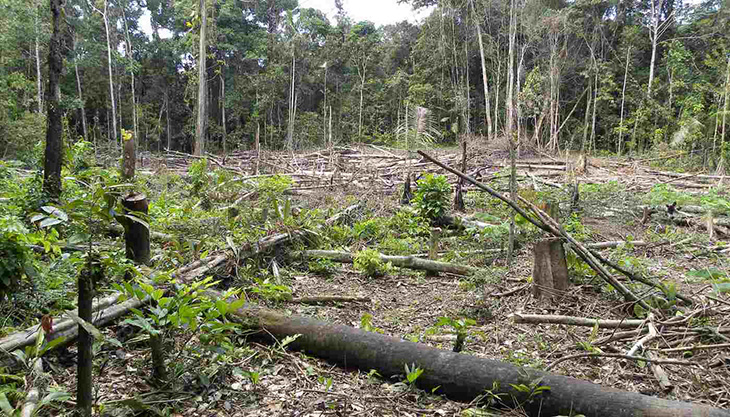

Looking at the number of deforested acres in Colombia, the outgoing environment minister has announced that 2024 will be one of the least damaging years for deforestation in recent decades. This is a remarkable achievement, especially considering the country’s long history of conflict and illegal activities that have contributed to large-scale forest destruction.
Given the persistent presence of paramilitary groups in rural Colombia over the past 50 years, the ability to significantly curb deforestation represents a major success for conservation efforts in one of the world’s most biodiverse nations.
Historical Context of Deforestation in Colombia
Colombia has faced persistent deforestation challenges, largely due to the occupation of its rural highland forests by armed groups such as the Revolutionary Armed Forces of Colombia (FARC) and the National Liberation Army (ELN).
While Colombia continues to grapple with conflict involving these groups, deforestation is also driven by dissident rebels, drug traffickers, and illegal economic activities. These actors contribute to deforestation by clearing land for building roads, setting up camps, ranching livestock, and possibly supplying the illicit hardwood trade.
The Colombian government has been making steady progress in reducing deforestation. In 2023, forest loss dropped by over one-third, totaling approximately 305 square miles. Although deforestation rates showed a slight increase in early 2024, Minister Susana Muhamed assured reporters that the year would still rank as the third-lowest for deforestation in the 21st century.
This demonstrates that the state is not only making progress but also sustaining its achievements in environmental conservation.
The Role of Natural and Human-Induced Factors in Forest Loss
Deforestation is not solely the result of human activity, such as logging or land conversion for agriculture. It is also influenced by natural disasters, extreme weather conditions, and climate-related events.
In 2024, experts initially feared a sharp rise in forest loss due to the impact of a strong El Niño weather phenomenon. This climatic event brought prolonged droughts, higher temperatures, and an increased risk of wildfires across Colombia by April, all of which posed a significant threat to the nation’s forests.
Data from the first quarter of 2024 indicated a 40% increase in deforestation compared to the same period in 2023. However, this trend appears to have slowed significantly in the months that followed, suggesting that conservation efforts and government policies have helped mitigate some of the expected damage.
The ability to curb deforestation despite adverse weather conditions highlights the effectiveness of Colombia’s environmental strategies and underscores the importance of sustained policy enforcement and community engagement in preserving the country’s rich natural resources.
A Hopeful Outlook for Colombia’s Forests
While challenges remain, Colombia’s success in reducing deforestation offers a promising outlook for the future of its forests. By maintaining strong conservation policies, addressing the root causes of illegal deforestation, and investing in reforestation and land protection programs, the country can continue to protect its invaluable ecosystems.
As the nation moves forward, ongoing efforts will be essential to ensuring that Colombia’s forests remain a vital part of its environmental and cultural heritage for generations to come.
What are your thoughts? Please comment below and share this news!
True Activist / Report a typo







